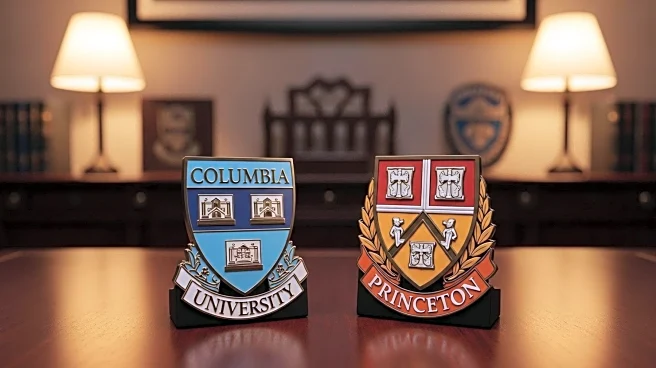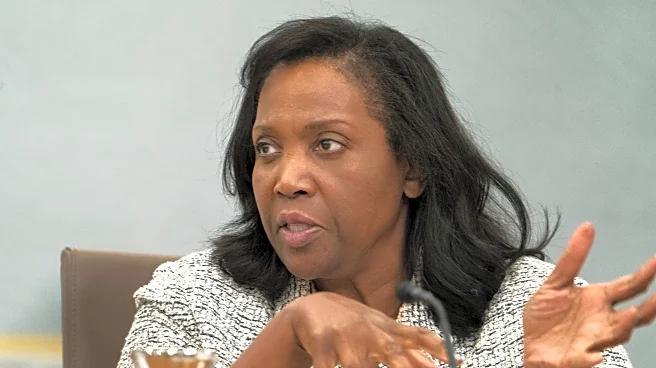What's Happening?
Columbia and Princeton universities have reported stable international student enrollment figures despite recent changes in affirmative action policies. Columbia's international student numbers have remained largely unchanged, while Princeton has seen an increase in foreign students for the fall class of 2029. This stability comes amidst the Trump administration's enhanced vetting of student visas, which could potentially delay or prevent some international students from attending. The Supreme Court's decision to end affirmative action in higher education has affected the racial and ethnic composition of freshman cohorts at both universities. Columbia's Black and Hispanic enrollment figures are similar to last year, although there was a significant decline in Black student enrollment following the court ruling. Princeton has experienced a notable drop in Black enrollment this year, while Hispanic admissions have remained stable.
Why It's Important?
The steady international student enrollment at Columbia and Princeton highlights the resilience of elite universities in attracting foreign talent despite political and legal challenges. The Supreme Court's decision on affirmative action has significant implications for diversity in higher education, potentially affecting the racial and ethnic makeup of student bodies. The decline in Black student enrollment at these institutions may reflect broader trends in response to the court ruling, raising concerns about access and representation for minority groups. The ability of these universities to maintain international enrollment suggests that they continue to be attractive destinations for global students, which is crucial for maintaining their competitive edge and fostering a diverse academic environment.
What's Next?
It remains to be seen how other universities, particularly those less selective than Columbia and Princeton, will be affected by these changes in affirmative action policies and international student visa regulations. The impact on diversity and inclusion efforts across higher education institutions will likely be a focus of ongoing debate and policy adjustments. Universities may need to explore alternative strategies to ensure diverse representation in their student bodies while navigating the legal landscape shaped by recent court decisions.












